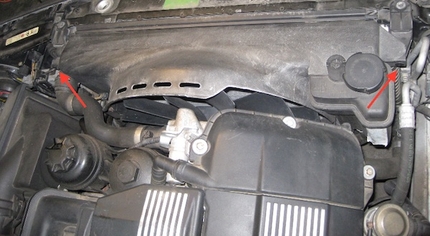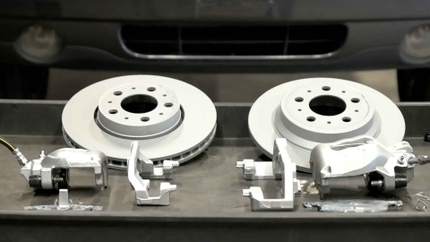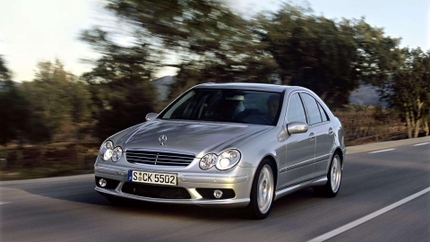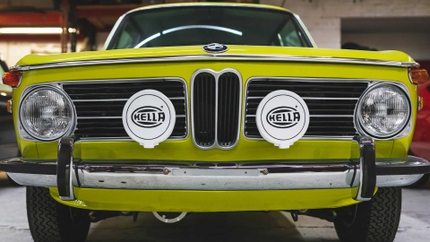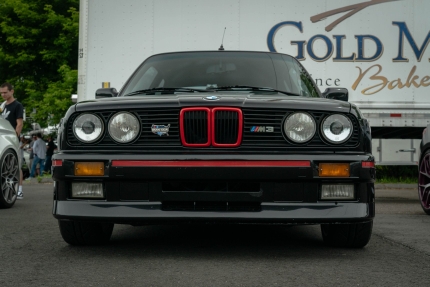- 02/02/2017
- 2 Min Read
- By: Nicolas Siemsen
Three Neglected Maintenance Items on Mercedes-Benz W123 Diesels
The venerable W123 chassis produced by Mercedes-Benz from 1977 through 1985, especially the diesel variety, has a reputation for being unstoppable. “They will just run, and run, and run!” As a result many new owners of these classic vehicles find that the previous owner(s) have deferred maintenance. While there is some truth to the sentiment that these are very robust autos, problems will nonetheless begin to arise after being ignored for so long.
Having gone through this maintenance catch up process on several of these cars, in this post I will cover three of the most commonly neglected items, what the consequence of this neglect can be, what you need in order to get back on track, and when you’ll need to consider doing the maintenance again as you continue to enjoy driving your classic Mercedes-Benz!
Number one - Engine oil
Diesel engine oil is put to task keeping your engine lubricated and clean, thanks to the additional heat, pressures, and soot put off by the diesel combustion process.
Consequences: poor lubrication for critical engine parts, soot build up in engine as the additives in diesel-rated oils age, improper seal of o-rings in filter housing causing low oil pressure.

How to get back on track: you will need to drain and fill your engine oil, replace the filter, and renew the o-rings on the filter housing lid. You’ll need the following parts:
- Engine oil filter kit (Includes drain plug/crush washer/oil filter housing lid o-ring)
- Two 5L bottles of 15w40 diesel-rated engine oil (You will use about 7 liters – save the other 3 for your next oil change or refills if your engine is leaky)
- Two o-rings that fit on the bottom of the shaft that extends from the oil filter housing cover shown in the picture below
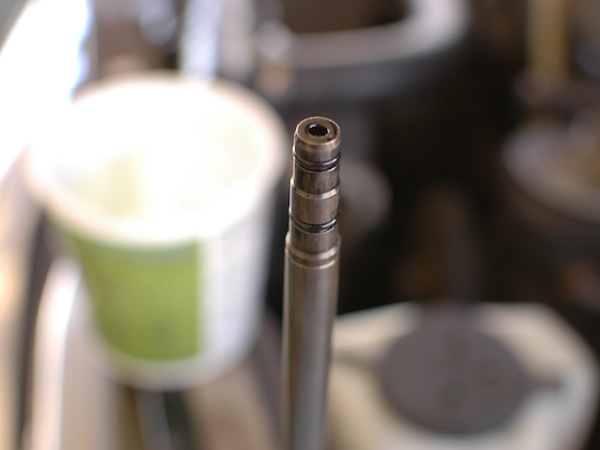
When to do it next: while most new cars have longer and longer oil change intervals, play it safe with your classic diesel due to the soot produced by the engine. Change your oil every 3,000 to 5,000 miles or once a year if you don’t drive it very often. Or, consider sending your oil out for analysis as discussed in this recent FCP Euro blog post by Gerry Tseng titled “How to Track your Engine’s Health through Oil Analysis.”
Number two - Fuel filters
Diesel fuel is inherently dirtier than gasoline and so the fuel filtration system on your older Mercedes sees a lot of action. Staying on top of fuel filter changes will keep your engine running happily.
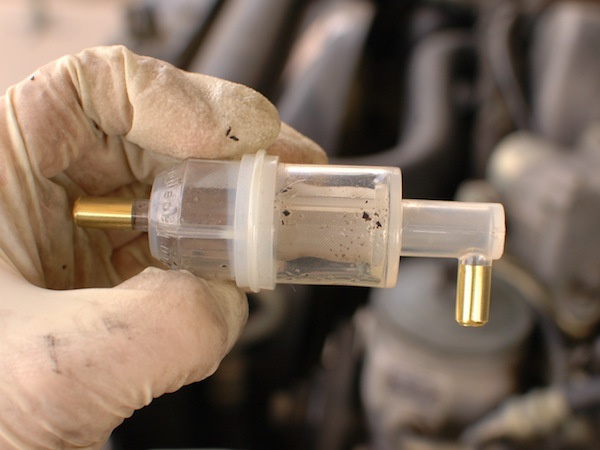
Consequences: Fuel pressure begins to suffer as your filters clog. At first this will lead to reduction in power, initially while going uphill or trying to merge on the freeway. Eventually it will make your diesel harder to start, or may even cause it to stall on the side of the road.
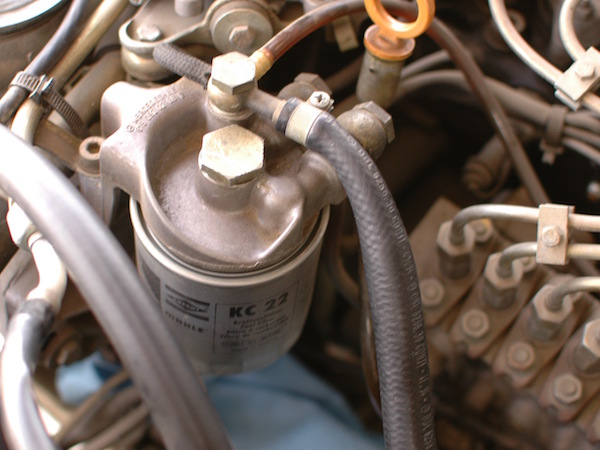
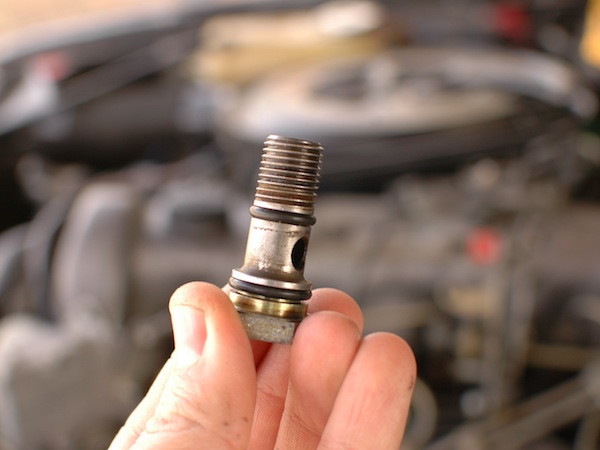
How to get back on track: Replace both the initial, or primary, fuel filter as well as the larger secondary fuel filter. While you are at it, you’ll also want to replace the o-ring(s) and/or crush washers that help the larger filter seal against fuel leaks. You’ll need the following parts:
- One small primary fuel filter
- One large spin-on secondary fuel filter
- Either a crush washer and single o-ring, or two o-rings of different sizes, for the banjo bolt that secures the larger secondary filter. This depends on the part number for the filter head, pictured above with the various fuel hoses connecting to it just on top of the filter. When looking at the part number stamped on top of the filter head, if the second to last number is “01” you will need the crush washer and small o-ring. If instead it is “02” you will need the two o-rings of different sizes. Pictured below is the style that goes with the "02" filter head, with two o-rings but no crush washer.
- Crush washer, only for those with the “01” filter head
- Larger upper o-ring, only for those with the “02” filter head
- Smaller o-ring that is used regardless of filter head
When to do it next: While there is no set interval for replacing the fuel filters on your Mercedes, I like to replace them every two years as preventative maintenance. You may also consider keeping a spare set in your trunk, along with the tools to change them, in case you find yourself stranded on the side of the road by some contaminated fuel.
Number three - Coolant
Coolant on these old cars seems to be one of those “out-of-sight, out-of-mind” items. Not only that, but most owners couldn’t tell you what variety of coolant is in their old Mercedes diesel, when this is actually very important! Change it on schedule, and use the right stuff, to make sure your car stays cool and on the road for a long time.

Consequences: not only can the obvious overheating occur if you neglect to change your coolant regularly, if you leave it in too long or use the wrong variety of coolant you can find yourself with an engine corrosion nightmare leading to leaks as well as damaged or failed components.
How to get back on track: drain the coolant, both from the radiator and from the engine block using the block drain plug, and refill it with the proper stuff! You will need:
- Two gallons of the correct type of coolant concentrate, I recommend Genuine Mercedes coolant (you will use 1.5 gallons plus 1.5 gallons of distilled water – pre-mix the other 0.5 gallon of coolant with 0.5 gallon of distilled water and keep it in your garage for top-offs as needed)
- One radiator drain plug – while not strictly necessary I like to replace this each time I renew the coolant in my cars as it is made of soft plastic and could easily break off during a future coolant change if it gets old and brittle.
When to do it next: Change your coolant every five years, or 100,000 miles, whichever comes first.
How to Change Coolant in a Diesel W123 Mercedes-Benz
Hopefully this information helps you get your Mercedes a bit closer to driving perfection! If you need help with getting the job done on any of these maintenance tasks just keep an eye open for upcoming blog posts that will provide detailed do-it-yourself guides for each.

